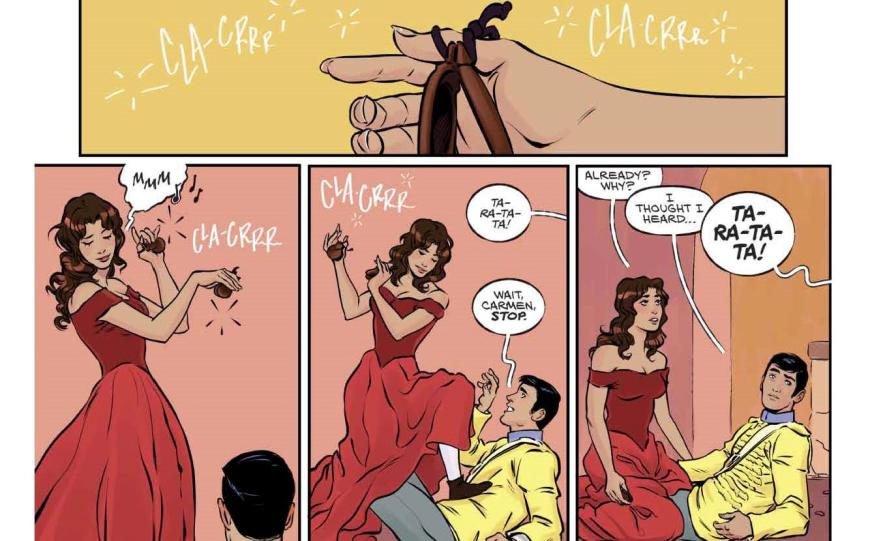
“Every woman is as bitter as gall. But she has two good moments: one in bed, the other in death.” — Greek epigram
So opens Prosper Mérimée’s 1845 novella Carmen, which inspired Georges Bizet’s serious heel-smashing, head-tossing opera of the same name. This is the thing, though, about Carmen, Mérimée’s gypsy antihero — unlike other exotic women popular in 19th-century European literature, whose very otherness often spelled doom, she guides her fate. Her bigger-than-life persona onstage and on the page resembles a comic book heroine, perhaps one in the Marvel universe that the American tenor Alek Shrader eagerly read in his youth.
Before 2020, Shrader’s only connections to Bizet’s Carmen were tangential; his first professional singing job was in its chorus, and his wife, the Argentine American mezzo-soprano Daniela Mack, had sung its title role numerous times. A curious alignment, however, of Shrader’s desire to stretch himself beyond performing and an opera company’s quest to build new revenue sources during the pandemic has given the Seville cigar factory “it girl” a new incarnation.
Say hola to Carmen: The Graphic Novel, publishing this December. “It’s an opera you can hold in your hands,” Shrader, its newly minted author, said in a late October Zoom interview from his home in southern Georgia, open palms toward the camera, a wide grin crossing his 40-year-old face.
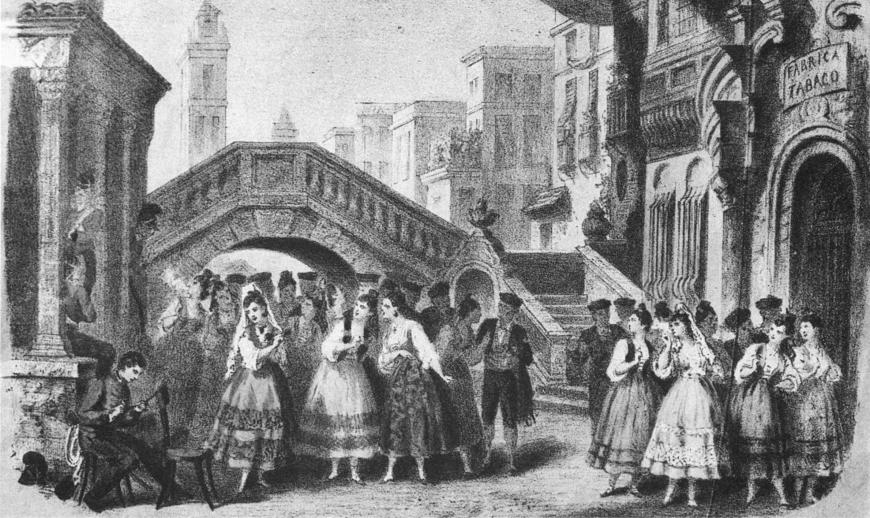
The idea of meshing the page and the stage isn’t new, with examples ranging from adapting famous Broadway musicals into graphic novels (The Phantom of the Opera, for one) to adapting an opera into an animated graphic novel production (more on that later). Most graphic novels are a world of fantasy and superheroes. In turn, opera offers dramatic action and vivid characters. The reason there’s deep chemistry, say experts, is that opera, comics, and graphic novels share a storytelling style and a penchant for expansive emotions, grand gesture, mythology, and fantasy.
Time will tell if Shrader and his collaborators can thank Bizet, who, in turn, can thank Mérimée for penning a good story. Story is everything, the scaffolding on which plot and character build. And Mérimée’s tale of obsession, lust, trust, and betrayal between two outsiders — the gypsy Carmen and Don José (from Spain’s Basque region) — has stood the test of time. Even Mérimée’s choice of Carmen’s name (Latin for “song” or “magic spell”) was kismet for a seductive character associated with music and “gypsy magic.” Premiering in 1875, the four-act Carmen is one of the most popular operas still performed today.
Comics scholar Chris Gavaler underscored the foundational import of story for comics in a late October Zoom interview from his Washington and Lee University office. “They’re not adapting the opera; they’re just adapting the story,” observed Gavaler of Shrader’s collaborative effort. “If successful, it means the artist who did the opera really picked a good story,” added the author of The Comics Form: The Art of Sequenced Images (Bloomsbury, 2022).
“Readers, like an audience, crave a good narrative. Musical, illustrated, or otherwise, the story of Carmen demands to be told,” Shrader said, noting that Bizet’s captivating melodic music immerses audiences in the story, perhaps to the extent they forget people are singing onstage.

Every Picture Tells a Story
Shrader’s story begins early in the pandemic when he and Mack were both home with their two young daughters. He learned of Arizona Opera’s OnPitch Business Challenge (think Shark Tank for opera) and decided to enter. The goal of the contest was to discover revenue-generating projects for the opera company that weren’t based on major donor funding, according to the organization’s website. “It kind of fell at exactly the right time,” said Shrader. “I was looking for something to do — I suddenly had no roles to learn.”
He initially conceived of a multivolume comic book of several operas Arizona Opera had slated for its canceled season. After extensive research he put together his pitch and sent it in. The proposal featured a five-year business plan that showed a comic book could produce revenue such as that generated by the published graphic novel of Richard Wagner’s Ring of the Nibelungs operas (done by the popular DC/Marvel artist P. Craig Russell).
“Comics are a billion-dollar-a-year industry — opera would do well to have a piece of that,” said Shrader, who found everything financial about the industry through deep dives on the internet. “The revenue is there; it just took a little bit of digging to find.”
Out of nearly 200 submissions, his pitch co-won the contest, and he shared its modest prize money with the other winning entrant, he said. Shrader’s proposal included creating three volumes of a comic book that the opera company might hand out after a performance or perhaps use as a fundraising gift. But the project went in a different direction when a former Arizona Opera employee heard about Shrader’s idea and put him in contact with David Hyde of Superfan Promotions, a Los Angeles-based publicity and marketing firm.
Hyde came on board as a paid consultant and recommended doing only one volume, a graphic novel, which Shrader and Arizona Opera (which owns all rights to the work) agreed on. After discussions with the opera company, it was decided only to focus on one opera instead of several.
Carmen was chosen partly because it had been on the canceled season lineup and also because “it’s a warhorse and one of the most beloved operas of all time,” Shrader said. But the story of Carmen is also a dark and violent one, he noted. “As glorious as the music is, and as popular and time-honored as it is, it does not excuse making it violent entertainment. One thing I want audiences to have is hatred of José and the lifestyle he represents.”
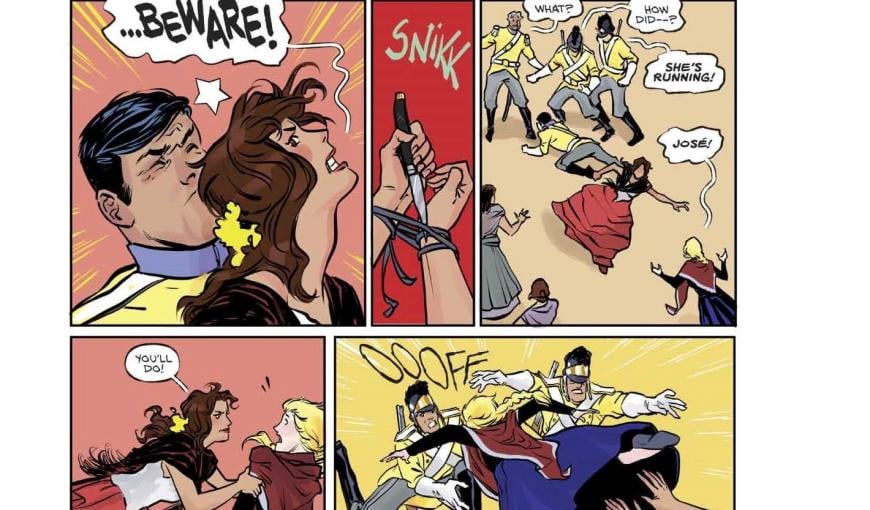
Shrader adapted Mérimée’s novella through a contemporary lens, noting that white French men, attracted by exoticism, created its plot and characters. “For those white French dudes, there’s a romanticized, seductive danger of those who live outside society’s rules, and yet they managed to create one of the most iconic female characters in all of opera (regardless of culture), an unapologetic feminist in the face of constant oppression,” Shrader said. “She is fearless and indomitable. She defies rules placed on her without consent. When attacked, she fights back ferociously.”
Roll of the Dice
Shrader’s original idea could have followed a newbie’s zigzag trajectory, with lots of dead-end detours given he hadn’t written a comic book before and didn’t know the intricacies of the medium’s formal structure. Unexpectedly, however, the pieces fell into place fairly smoothly as he became a quick study in all things comics and social media networking.
Beginner’s luck also played a role. Shrader diligently tried to reach the legendary comics artist P. Craig Russell, leaving messages on various social media sites as he didn’t have Russell’s direct contact information. To Shrader’s surprise, Russell eventually responded to one of his notes asking for advice about how to do the project. “Instead, Craig said, ‘Why don’t I just do it?’” Shrader explained. “I was speechless; I’d never dreamed he’d be interested in a first-time comic book.”
Russell agreed to do the page design (from layout and number of boxes on each page to sketching in the characters and setting). He suggested the Spanish illustrator Aneke Murillenem for the line drawings and color (think of her contributions as set design, costumes, and color choice) and lettering artist Hassan Otsmane-Elhaou. All three were paid their normal professional rates, according to Shrader, who did not receive compensation for his work on the graphic novel. (Russell did not respond to interview requests through an intermediary.)
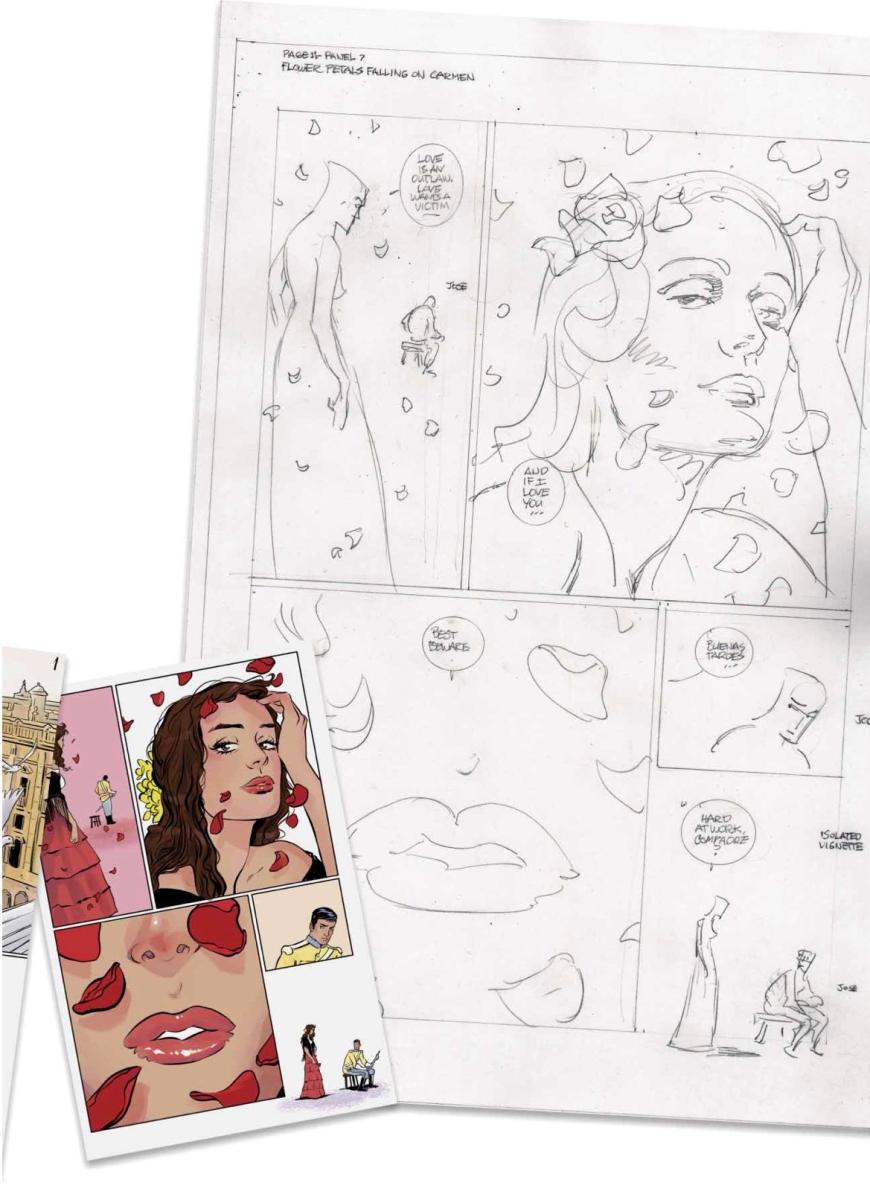
Once a few panels were ready with art and Shrader’s narration and dialogue, Superfan Promotions launched what was to be a 30-day Kickstarter crowdfunding campaign (kitted out with a sophisticated social media strategy) to finance the graphic novel’s production.
The Kickstarter campaign went live on March 28, 2022, with a $20,000 goal. It featured the bold image of a sizzling Carmen — long, wavy brunette tresses flying as she blazed her way across Twitter feeds. Not long after its launch, shout-outs from heavyweight writers Margaret Atwood and Neil Gaiman and rock star comics artist Matt Kindt boosted the campaign’s reach, leading it to exceed its dollar goal by $7,000 within 48 hours. As of Oct. 28, 2022, $42,944 has been raised from a total of 829 backers, according to the Kickstarter page.
“Those authors are at a stratospheric level,” said Shrader of Atwood, Gaiman, and Kindt. “Superfan knew what they were doing. Word of mouth spread really well.”
As Shrader worked on the project, Mack helped with reducing the novella’s dialogue and acting out scenes. “She was my Carmen,” Shrader said with a smile. He followed Mérimée’s story as much as possible. “It wasn’t always copacetic,” he revealed. He took artistic license when he felt it was needed. “I tried to get Garcia in but couldn’t,” he said of Carmen’s eye-patch-wearing husband, who is featured in the novella.
Taking artistic license for Shrader meant not omitting uncomfortable aspects of the novella, “Character flaws are part of what makes stories compelling.” It was important closure for him to include José’s death (taken from the novella) in the graphic novel’s epilogue. He also wanted the fourth act to feature a brutal confrontation between José and Carmen, “where she cuts off his ear like a trofeo from a bull and leaves her knife in his back ... but it wasn’t in the cards.”
On a lighter note, Shrader sprinkled dialogue across the comic with witty anachronistic expressions such as “you’re just in time for happy hour,” said by a sultry Carmen flirtatiously greeting Don José as he arrives at a tavern.
Finding New Audiences
If the enthusiastic response to the Kickstarter campaign is any indication, adapting operas into comics may be a way for opera companies — struggling financially and to fill seats — to find broader and younger audiences, as well as to tap into an enormous new well of comics fans, said Shrader.
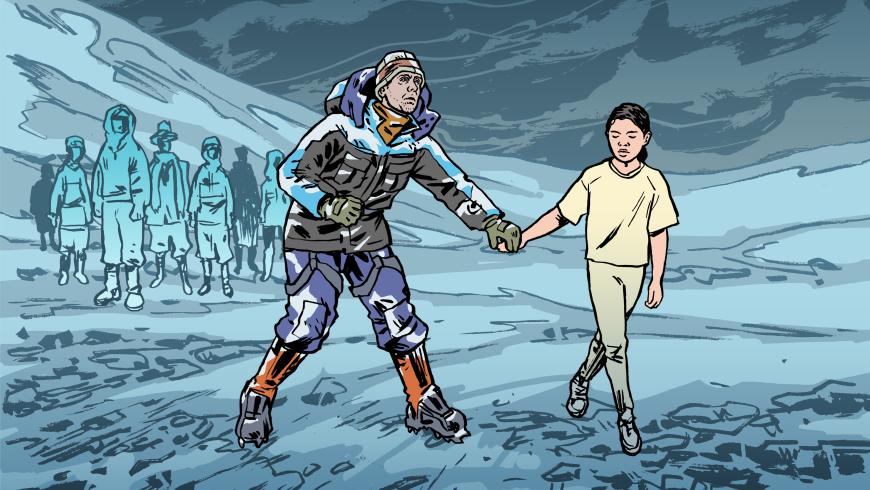
In an earlier opera-meets-comic-book undertaking, San Francisco’s Opera Parallèle presented, in collaboration with the Dallas Opera, a reimagined digital production of composer Joby Talbot’s Everest, based on the 1996 tragedy on that mountain. Brian Staufenbiel, creative director of Opera Parallèle, conceived and directed the animated film Everest: A Graphic Novel Opera, which premiered in 2021. Winning an Arizona International Film Festival award for innovation helped Opera Parallèle reach new audiences, said Staufenbiel in an email.
“Bringing new audiences [to opera] has, and remains, the internal struggle,” he said. “But the more we expand our reach by melding genres and doing cross-disciplinary work with interesting aesthetics like the graphic novel, we are better positioned to reach younger and wider audiences. And the more we share operatic stories with the graphic novel community, in their medium, the better chance we have of seeing them in an opera house.
“Any time you combine genres that work well together,” he continued, “there is a natural confluence of cross-pollination.”
The attraction of introducing opera in graphic novel format rather than as a staged production can perhaps be explained, Shrader said, by the greater accessibility of comics compared to “stigmatized” opera (which is also exciting and inspirational, he noted). “An opera presented in appealing sequential art, creating familiarity and empathy with the narrative in ways opera cannot, just might serve as a gateway to the opera house itself.”
The Past and the Future
For much of his life, comics have inspired Shrader. “My imagination was captivated and fueled by these sequential images which tell me the story,” he said. “Much of the control in consuming a comic book is in the reader — you produce a lot of the creativity yourself.”
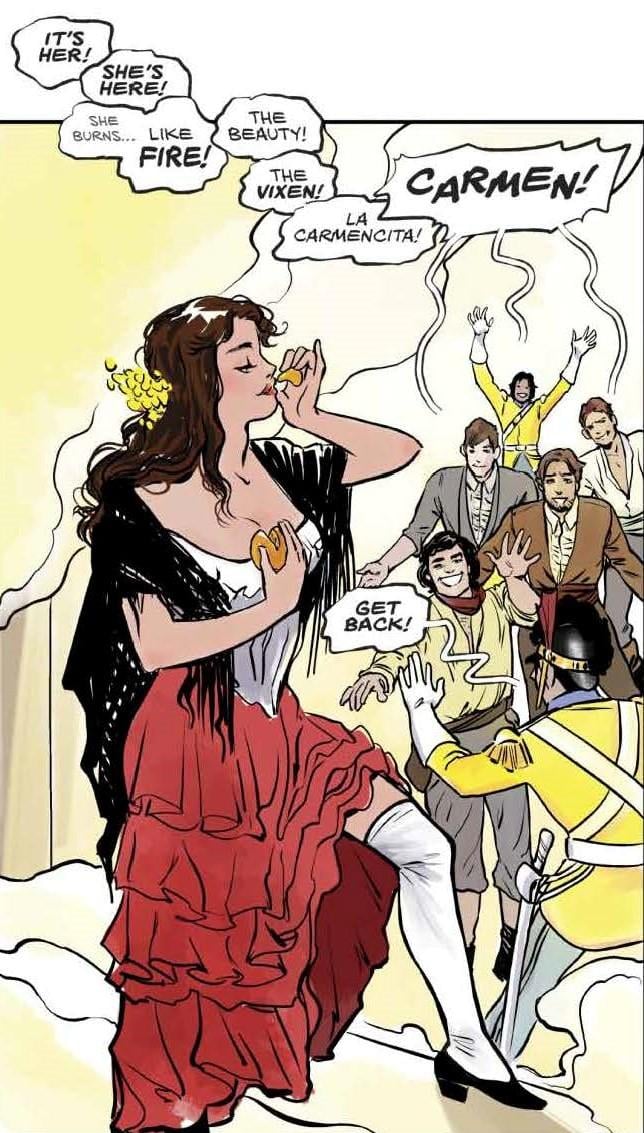
The comics that Shrader grew up with, however, were not based on operas. So who is buying a graphic novel of Wagner’s Ring Cycle or the other graphic novels of famous operas (The Magic Flute, Parsifal, Richard Strauss’s Salome) that P. Craig Russell has adapted? Opera lovers? Comic book aficionados?
“It’s his fans. ... He’s the Renée Fleming of comics,” said Shrader of Russell. “He has a very strong following, been doing it for decades, and Neil Gaiman and other really famous authors work with him. I think we just got him because of his own personal interest in opera and his generosity.”
When asked who will buy Carmen: The Graphic Novel, Shrader replied, “I hope we get some converts.”
Clover Press, the small San Diego publishing house for this newest retelling of Carmen, explained its target market. “At its core, Carmen is a classic story filled with action, passion, love, drama — all the ingredients for a great graphic novel,” said publisher Hank Kanalz in an email. “This book is perfect for the opera lover but also a fantastic entry [for] newcomers into the world of opera.”
Asked if that market is profitable, the former longtime executive with DC Comics/Warner Brothers said, “Publishing in general is challenging, more so during these times. We hope this book will find its audience ... but a book by P. Craig Russell and Aneke, and debuting a new voice, who happens to also be a tenor, will appeal to both graphic novel and opera fans.”
Shrader is busy with singing engagements again, but his next steps off the stage are to find funders to commission more of his ideas into graphic novels or films. “Or I’m going to do it myself. And if I’m doing it myself ... I’m going to go Baroque,” he said, with an actor’s comic timing. “I think there’s so much opportunity to modernize or futurize or put characters saying the same text, not in a different context, but to tell a more modern story.” Handel operas, Shrader said, or other Baroque operas that favor mythological themes popular at that time would adapt well.
Gavaler, the comics expert, understands Shrader wanting to go Baroque with future graphic novels. “We think comics, we think superheroes,” said Gavaler. “Alek seems to be seeing that connection.”
Mérimée’s novella ends with a popular European and Romany proverb: “A closed mouth, no fly can enter.”
The proverb’s common meaning is refrain from talking about someone or something to avoid judgment. Mérimée’s use of it to bookend his story might suggest to readers that if Carmen had only followed the rules laid out in the novella’s opening epigram, her fate might have been different.
Avoiding judgment, however, wasn’t Carmen’s style. “That which will be. Will be” — her final words in the graphic novel as she lets Don José take her life.
“For Carmen, it’s her battle — it’s her concept of fate,” Shrader said. “She decides not to be afraid of fate and lets fate take its course. And nearly 150 years later, her story is still relevant.”



